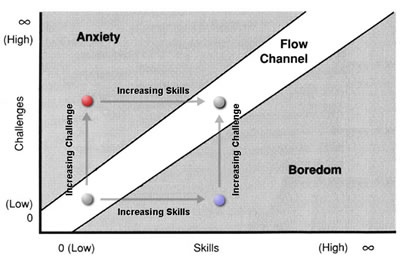Innovate Carolina Conference April 12 Greensboro
Hello fellow innovators.
Each year the Carolinas Chapter of the PDMA holds a one day innovation conference, focusing on innovation best practices and local innovation success stories. Over the years the conference has been recognized as on par with the best conferences in the innovation space, and we attract top speakers and create interesting networking opportunities since the conference is focused primarily on the Carolinas. Our conference is called Innovate Carolina.
Bridging the Gap between ideas and new products
For 2013 we have an excellent program planned. Our key theme this year is "Bridging the gap" between ideas and new product introductions. We will have a series of speakers who focus on case studies, lessons learned and other insights that describe how to move from idea generation to bringing new products to market. There's often a "gap" between the brainstorming activity - generating ideas, and product development and commercialization. We want to focus on the gap, to help you bring more of your good ideas to life as new products and services.
Keynote Speakers
Our keynote speakers include Chris Trimble, who is an innovator, an academic (professor at Tuck Business School) and an author. Scott Edgett will also address our conference. Scott is an author of several books and the CEO of Stage-Gate, and will share his experience with the group.
North and South Carolina featured speakers
For "local" flavor we are pleased to welcome Dr. Eric Tomlinson, the Chief Innovation Officer at Wake Forest Baptist and President of the Piedmont Triad Research Park. Along with Dr. Tomlinson, we'll have speakers from a range of local firms, including National Gypsum, Milliken, InVue Technologies, the Center for Design Innovation, and many more.
Our invitation
We want to see you at Innovate Carolina 2013. The speakers are excellent, the venue is terrific, thanks to our partnership with NC A&T, and the networking possibilities are unparalleled. There's every reason to attend, and we hope to see you there. While the event is sponsored by the PDMA, you don't have to be a PDMA member to attend. And, while the event is focused on innovation in the Carolinas, we are happy to invite anyone, from any region to attend. In 2012 we had attendees from ten states, including New York, Georgia, Indiana as well as North Carolina, South Carolina and Virginia, and from several countries, including the UK and Singapore.
For more information, and to register for the event, please see the conference website.
Each year the Carolinas Chapter of the PDMA holds a one day innovation conference, focusing on innovation best practices and local innovation success stories. Over the years the conference has been recognized as on par with the best conferences in the innovation space, and we attract top speakers and create interesting networking opportunities since the conference is focused primarily on the Carolinas. Our conference is called Innovate Carolina.
Bridging the Gap between ideas and new products
For 2013 we have an excellent program planned. Our key theme this year is "Bridging the gap" between ideas and new product introductions. We will have a series of speakers who focus on case studies, lessons learned and other insights that describe how to move from idea generation to bringing new products to market. There's often a "gap" between the brainstorming activity - generating ideas, and product development and commercialization. We want to focus on the gap, to help you bring more of your good ideas to life as new products and services.
Keynote Speakers
Our keynote speakers include Chris Trimble, who is an innovator, an academic (professor at Tuck Business School) and an author. Scott Edgett will also address our conference. Scott is an author of several books and the CEO of Stage-Gate, and will share his experience with the group.
North and South Carolina featured speakers
For "local" flavor we are pleased to welcome Dr. Eric Tomlinson, the Chief Innovation Officer at Wake Forest Baptist and President of the Piedmont Triad Research Park. Along with Dr. Tomlinson, we'll have speakers from a range of local firms, including National Gypsum, Milliken, InVue Technologies, the Center for Design Innovation, and many more.
Our invitation
We want to see you at Innovate Carolina 2013. The speakers are excellent, the venue is terrific, thanks to our partnership with NC A&T, and the networking possibilities are unparalleled. There's every reason to attend, and we hope to see you there. While the event is sponsored by the PDMA, you don't have to be a PDMA member to attend. And, while the event is focused on innovation in the Carolinas, we are happy to invite anyone, from any region to attend. In 2012 we had attendees from ten states, including New York, Georgia, Indiana as well as North Carolina, South Carolina and Virginia, and from several countries, including the UK and Singapore.
For more information, and to register for the event, please see the conference website.



 Voted 2nd best innovation blogger two years in a row!
Voted 2nd best innovation blogger two years in a row!
